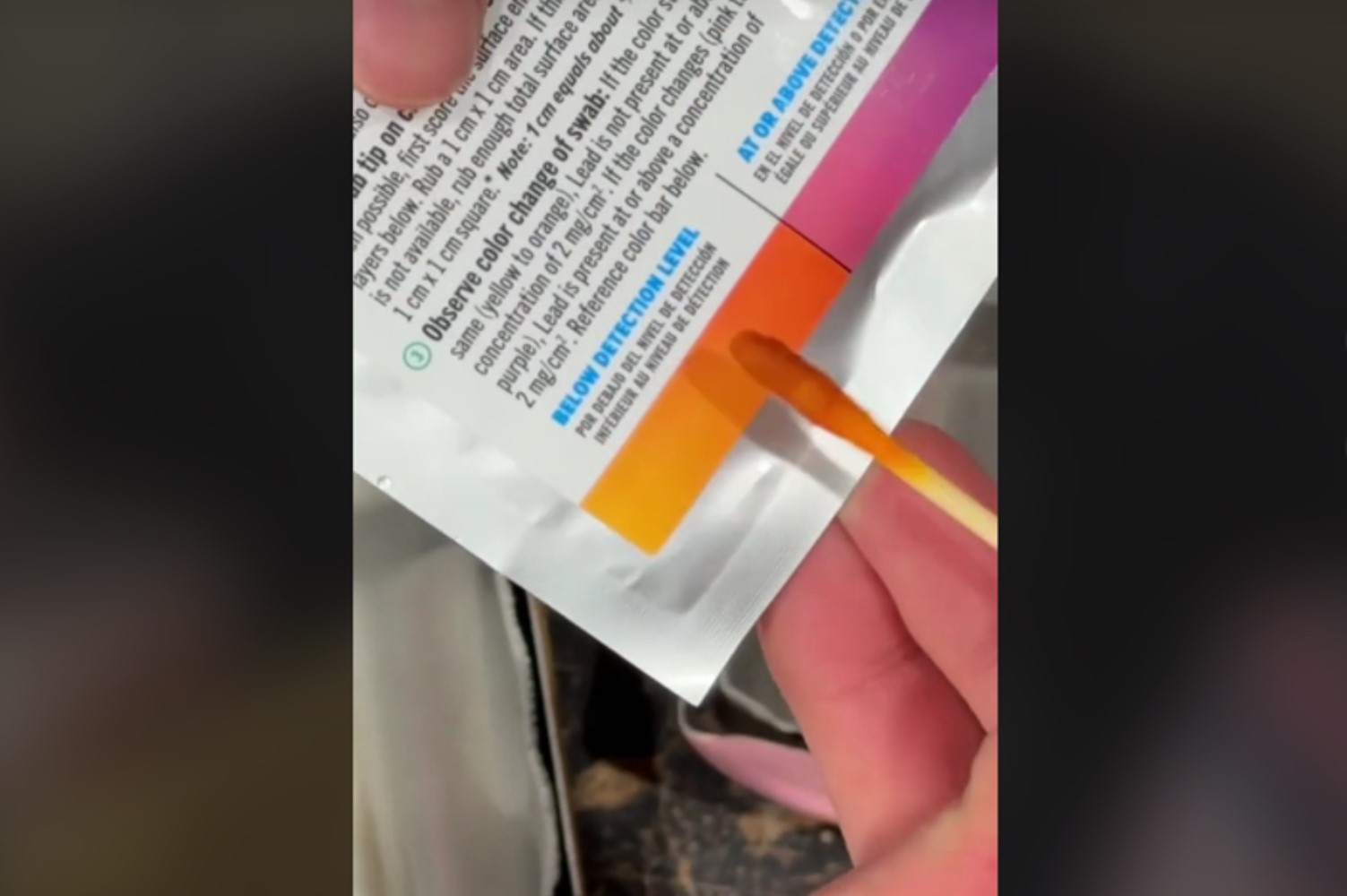Why You Should Care About Lead in Your Stanley Cup
Stanley cups have been all over the internet in recent years. But now it appears the popular reusable cup may experience a dramatic drop in sales after social media posts reveal they contain highly toxic lead.
This is all you need to know about the potential exposure to lead from a Stanley cup.
PMI’s Stanley Cup
A reusable drink cup manufactured by PMI has recently taken the world by storm. The vacuum-insulated cups can hold up to 40 ounces of liquid and have been a bestseller for several years.

Source: CNBC Make It
Yet this could be set to change after Today reported the Stanley cups could leech highly toxic lead into the user’s beverage.
People Begin Testing Stanley Cups for Lead
PMI’s problems began after numerous TikTok users shared videos suggesting that the Stanley cups contained highly toxic lead, per Today.

Source: @WaterJetChannel/TikTok
Many videos show customers using at-home test kits to check for contamination, and plenty of people reported shocking positive results.
Manufacturer Forced to Reveal Stanley Cups Contain Lead
In the wake of the allegations, Stanley was forced to make a statement back in January confirming that the cups do, in fact, contain a small amount of lead.

Source: CNBC/Make It
According to Pacific Market International, via Yahoo, “Lead is used as part of the tumbler’s vacuum insulation and is covered by a stainless steel layer that protects consumers from lead exposure.”
Stanley Explains the Use of Lead in Their Cups
Speaking with CNN, a Stanley spokesperson explained the use of lead in their cups.

Source: Freepik
“Our manufacturing process currently employs the use of an industry-standard pellet to seal the vacuum insulation at the base of our products; the sealing material includes some lead,” they said.
Stanley Tries to Reassure Customers About the Lead in Their Cups
“Once sealed, this area is covered with a durable stainless steel layer, making it inaccessible to consumers,” they continued.

Source: CNBC/Make It
“Rest assured that no lead is present on the surface of any Stanley product that comes into contact with the consumer nor the contents of the product.”
Customers Outraged at the Manufacturer
After Stanley released several statements on the topic, many of its customers felt betrayed, as the company failed to mention that lead was used in manufacturing.

Source: Freepik
According to Today, the cup manufacturer, Pacific Market International, is now being sued by a Seattle-based firm.
Lawsuit Brought Against PMI
The suit was filed in February 2024, with the Seattle-based firm arguing PMI misled consumers by refusing to warn those who had purchased the Stanley cups of a potential exposure to lead.

Source: Freepik
According to the lawsuit, the manufacturer didn’t disclose the exact amount of lead in each cup, either.
Stanley Plans to Fight 'Meritless Claims'
A spokesperson for the brand shared a statement with USA Today, saying the company will fight the allegations.

Source: Freepik
They plan to defend “against meritless claims. As we have shared, there is no lead present on the surface of any Stanley product that comes into contact with the consumer nor the contents of the product,” they said.
Side Effects of Lead Poisoning
Should the protective disc that houses the lead pellet break, each beverage placed within the large mug will be exposed to the highly toxic lead.

Source: Freepik
According to the Cleveland Clinic, ingestion of lead can lead to severe problems that affect the brain, nerves, blood, and organs.
Symptoms of Lead Poisoning
Children are at a greater risk of lead poisoning, as their bodies are still developing, according to the clinic. Symptoms in children can be challenging to spot but include cramps, learning problems, changes in behavior, hyperactivity, and anemia.

Source: Freepik
Typical symptoms for adults include loss of sex drive, headaches, abdominal pain, personality changes, anemia, and infertility.
Should You Avoid Purchasing a Stanley Cup?
When it comes to taking a chance with the Stanley cups, Jane Houlihan, research director for Healthy Babies, Bright Futures, argues, “Lead is so toxic you just can’t take chances with it” (via Yahoo).

Source: Freepik
There is no reason to risk your health and longevity when it comes to Stanley cups. As many alternative cups and mugs that contain no lead are available, it might be better to choose another cup.
